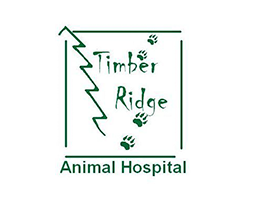Library
-
Fleas are less common in hedgehogs than in cats or dogs, but a similar treatment protocol is required to control an infestation. This handout describes the clinical signs of fleas in hedgehogs and what to do if your hedgehog is affected.
-
Rabbits can become infested with fleas, especially if they go outside or live in a house with other pets that have fleas. Rabbits with fleas may show no signs or may bite, lick, or scratch themselves. Young rabbits with heavy infestations may become anemic. There are no rabbit-specific drugs for managing fleas. Certain topical anti-parasite medications appear to be safe but should only be used under the guidance of a veterinarian familiar with rabbits.
-
Fluralaner is given by mouth or applied topically and is used to treat flea and tick infestations, and also off-label to treat certain types of mange and mites. Give as directed. Side effects are uncommon but may include stomach upset or neurologic symptoms. Do not use in pets with a history of seizures. If a negative reaction occurs, please call the veterinary office.
-
Giardiasis is an intestinal infection caused by a microscopic protozoan. The parasites attach themselves to the intestinal wall and the damage causes an acute, sudden onset of foul-smelling diarrhea. Diagnosis may be by routine fecal flotation or presumptively based on clinical signs. Fenbendazole and metronidazole are the drugs most commonly used to kill Giardia. Giardiasis is the most common intestinal parasitic infection of man and can potentially be passed from cats to humans.
-
Giardiasis is an intestinal infection caused by a microscopic protozoan. These parasites attach themselves to the intestinal wall and the damage causes an acute, sudden onset of foul-smelling diarrhea. Diagnosis may be by routine fecal flotation or presumptively based on clinical signs. Fenbendazole and metronidazole are the drugs most commonly used to treat giardiasis.
-
Harvest mites, also known as red bugs, trombiculid mites, scrub-itch mites, berry bugs or, in their larval stage, as chiggers, are mites commonly found in forests and grasslands. Larval stages affect warm-blooded animals and cause a very itchy skin reaction.
-
Harvest mites, also known as red bugs, trombiculid mites, scrub-itch mites, berry bugs or, in their larval stage, as chiggers, are mites commonly found in forests and grasslands. Larval stages affect warm-blooded animals and cause a very itchy skin reaction.
-
Guinea pigs can be hardy and easy to care for when provided an appropriate environment for their unique needs. Like all animals, guinea pigs are susceptible to certain problems and diseases. This handout outlines the diagnosis, treatment, and prognosis for some of the more common health problems of guinea pigs.
-
Heartworms (Dirofilaria immitis) are blood-borne parasites that reside in the heart or nearby large blood vessels of infected animals. Veterinarians now strongly recommend that all cats receive year-round monthly heartworm preventives.
-
There is no drug approved for treating heartworms in cats and surgical removal is generally the best option. Veterinarians now strongly recommend that all cats receive heartworm preventative.

